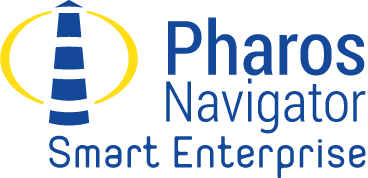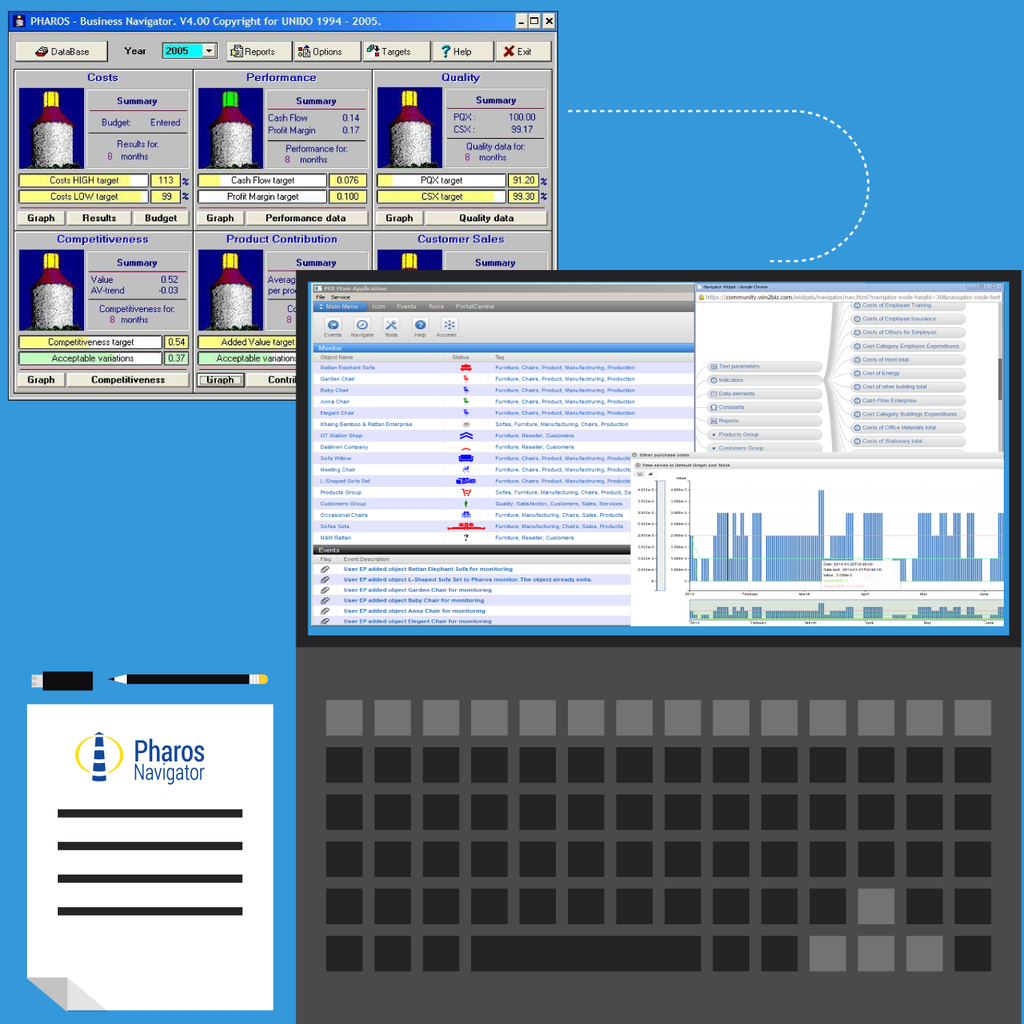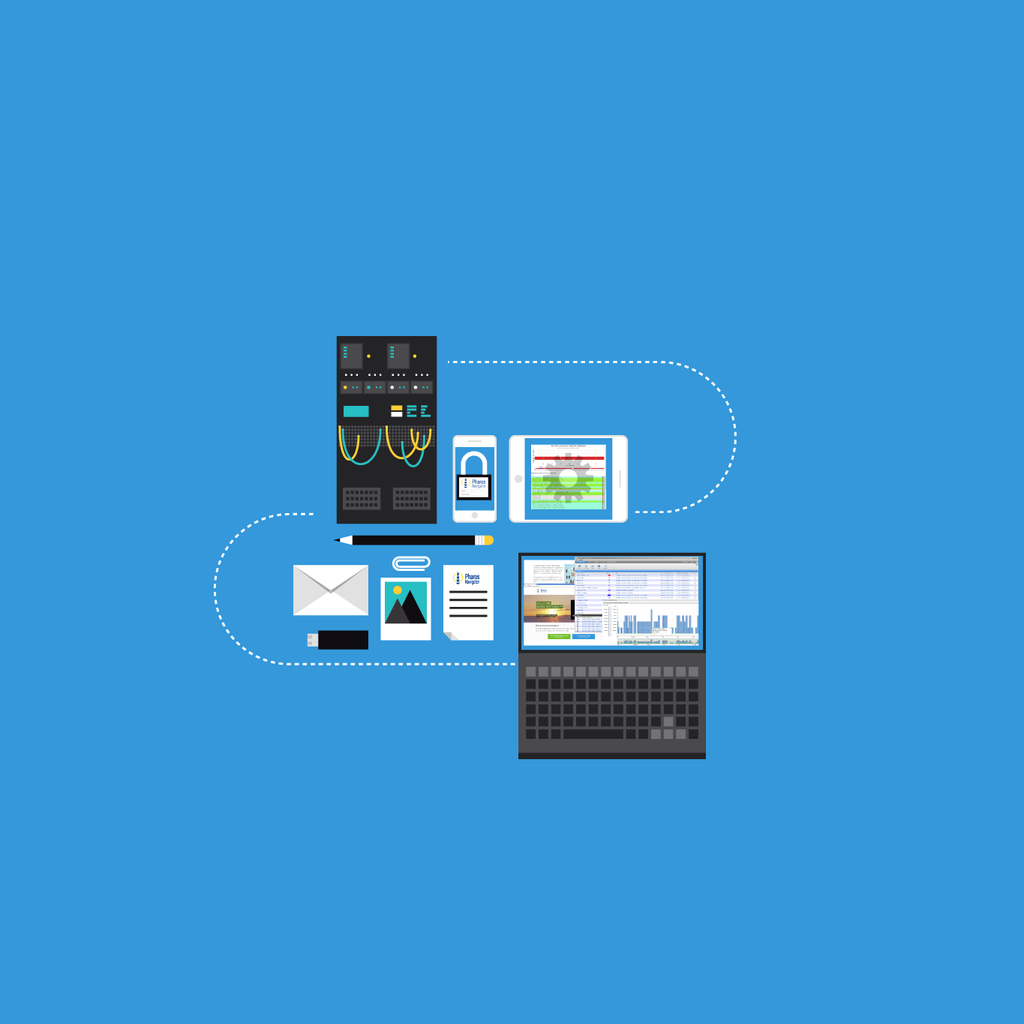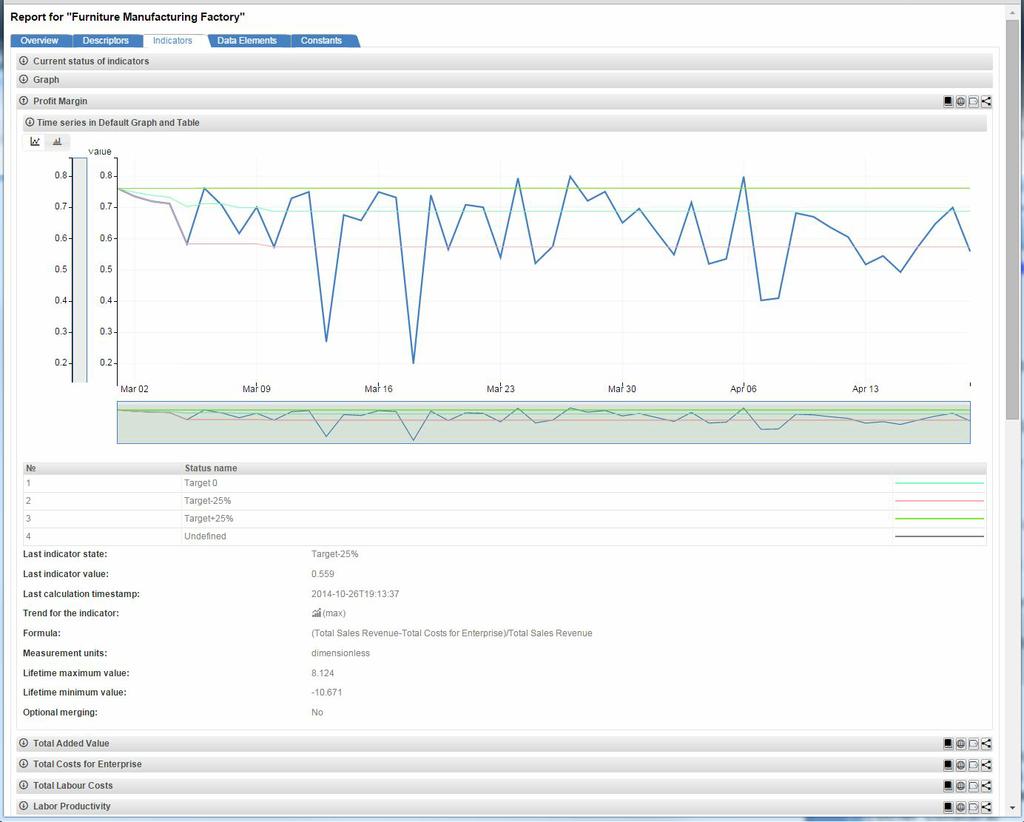Введение
Major features and functionalities
The Pharos Navigator platform realizes new Industry 4.0 type digital enterprise solution for smart management and operations in smart manufacturing, smart services, smart hospitals, smart buildings, education and training.
The platform allows an organization
- Making own custom models of the operational structure as complex cyber-physical system realizing relevant business processes
- Linking the model to necessary diverse data sources such as sensors, IoT, control systems, SCADAs, mobile & stationary connected assets databases, webs, etc
- Receiving big data streams from all the target sources and its transforming into information services for smart sustainable management proving transparent information about ongoing processes and business results in real time
- Enabling management to obtain necessary details quickly while identifying the causes of inefficiencies or problems, providing rich analytics (on-going, predictive, etc), benchmarks, simulation of decision options and expected follow-up responses
- Implementing personal Command and Control Dashboards on mobile devices providing holistic vision of the ongoing performance of the whole organization, its parts and functional departments, teams, customers, suppliers, machinery and other enterprise resources
- Having complex issues presented in simple and easy understandable way providing their current statuses, enabling conditions for sustainability and providing relevant events in real time.
The platform fosters effective holistic vision of business to monitor, analyze, measure, benchmark, plan and manage business performance, ongoing change, trends and manage relevant responses. It allows quick and easy adaptation of the business models to ongoing change in structure, operational requirements, standards, demand and markets.
Private sector application examples
The powerful applications running on the Pharos platform include Manufacturing, Services, Healthcare, Corporate Management, Assets management, Compliance, Procurement, Operations, Finance, HR, Quality, Metrology, Inventory, Logistics, Retail, Customer Services, Supply Chains, Facility management, Sales, Marketing, IT, Internet, Environmental, Energy, Education and training.
The rich set of applications allows defining the model of an organization as complex cyber-physical system with its hierarchical structure corresponding to actual business and run the model being connected to multiple diverse data streams from sensors, IoT, control systems, databases and applications. Each object in the models structure is described by the customized set of indicators, data sources and hierarchy of sub-objects (e.g. departments, products, services, operations, etc). The model addresses the monitoring, benchmarking and analytics needs of diverse organizations empowering sustainability and efficiency and mobility.
The application examples are available as demo models of Smart Enterprise and Smart CIty.
Overview of applications
The platform is available as service to be subscribed and used immediately providing several software components including
- Enterprise digital transformation engine
- Model builder clients running on notebooks and PCs
- Management control and command dashboards and reports running on common devices such as mobiles, tablets, notebooks and PCs
- Sample enterprise application model to be used as template for developing comprehensive custom model for each unique enterprise
- Various add-on components providing additional functions and features (analytics, reporting, training, advertising of products and services, etc)
When running in-house or in cloud, the platform empowers managers and stakeholders of private and public organizations to monitor, control, analyze and benchmark required business objects and processes within their organizations.
The organization as a whole, its departments, such as finance, production, separate products and services, its quality, sales and deliveries, customers and suppliers, employee activities, machinery operations, environmental and energy efficiency issues, etc. can be objects of such monitoring, benchmarking and analysis. The selection of focus objects, definition of necessary parameters and optional states, relations between objects, rules of object change – all these properties can be implemented locally by enterprise personnel or consultants after initial training.
The platform has customization tools supporting easy adaptation to change in organizational or operational structure, business processes.
Outcomes
Pharos Navigator platform greatly improves visibility, transparency and efficiency of an organization as complex system with multiple financial, economic, social and environmental aspects of its operations. It facilitates managerial capacity to understand business objects behavior, change, benchmark actual results vs. planned targets facilitating sustainable development. The smart holistic sustainable management helps entrepreneurs, managers, specialists in their daily operations, continuous improvement of results, quality and efficiency. It provides data drive business analytics, benchmarking and preparation of important business decisions.
Overview of the features in short video
Public sector application examples
There is variety of optional Pharos Navigator platform applications in
- Local Governance, Municipalities, Utility and Public Services (including budget spending, service quality monitoring, partnerships, emergency services, health service quality, safety and security, water supply, energy supply, road maintenance, housing, etc)
- Operations of regional administrations (development of regional economics, employment and training, supply of basic goods, education, transportation infrastructure, communication infrastructure, protection of nature, industrial services and trade, sports and recreation, gender equality, vulnerabilities, poverty, cultural and historic heritage, etc)
- Sustainable Environment (air, water, waste, natural resources, land management, soil, etc).
The details regarding these applcaitions are presented in the other section of the portal Smart City Monitor.
The platform supports major international standards related to quality of management and governance.
Users in an organization
The platform users are defined by local Administrators of Business Applications (ABA) for each Pharos Navigator engine. The users can include management itself, employees and selected external recipients of enterprise information e.g. stakeholders, business partners, auditors, citizens, public in general. Each of these groups is provided with specific rights for accessing the information accordingly to internal organizational policies set by local ABA.
The platform was designed with special focus on simplicity, usability, maintainability and cost minimization to assist private and public small and medium size organizations (5-300 employees) in different industries and types of business. The organizations can subscribe for and install multiple engines in departments with its links to own relevant data sources, IoT, SCADA, ERP, MES, robots, databases, control systems.
Operation in brief
The Pharos Navigator platform automatically implements the following:
- Receiving big data streams as process measurements from diverse data sources installed in target objects (or systems) by reading sensors, IoT, SCADA, ERP, MES, autonomous control systems, robots, databases, webs and other systems connected to networks and Internet
- Transforming data streams into time series of relevant indicators calculated in real time for each node of the model representing cyber-physical structure of the organization (may include multiple branches, divisions, sales points etc in different geolocations worldwide)
- Calculating current status of each object in the structure depending on latest values of its indictors and states of its sub-objects
- Saving results in local database running on PharosN engine
- Undertaking control actions using actuators and events sent to executives in relevant departments
- Sending prompt updates to all stakeholders mobile and computer devices which monitor and analyze the business objects of their interest in the organizational model accordingly to existing rules of information access for each such user.
The time series of object measurements are read from various sensors and imported from data sources as data elements using connectivity solutions. After storing locally it is processed by server in real time to calculate a chain of indicators which depends on the data. Each indicator is considered as dynamic parameter of particular object and can be defined locally by users. The calculated value of each indicator is analyzed for potential influence on the state of the relevant object at this moment of time. The rules of influence are simple and its definition can be made by enterprise management using the Editor of Object States.
The results are used for data mining applications such as benchmarking, business analytics/intelligence, performance management, statistics, decision preparation, risk assessment, etc. The complete information about the objects, their dynamics of change, current values of parameters and other relevant details about on-going processes is available to management and employees of organization near-real-time on-line. It include all types of information such as quantitative, semantic, video, animation, geolocations, mapping, charting, etc. available on common mobile and other computer devices. The examples of interactive dashboards are (see demo applications)
The definition of objects and selection of those ones which are required for monitoring and analysis is fully customizable and are made by users themselves. All communications between servers, user devices and smart agents are implemented in secure data protected mode in consideration of possible use of common public networks such as Internet, Wi-Fi and cellular.
Presenting main features in short video
How to make customised indicators? View short video
How to analyse dependencies between indicators and data sources? View short video
Adding sensors and smart meters: View short video
Objects and Processes
The structure of the business and operational models of the organization as complex cyber-physical system is defined by the specialists of the organization who install and run the engine. The definitions are made interactively using the model builder tools in the Power Client and do not require programming in computer languages. The customized model development is facilitated by the sample enterprise model provided along with subscriptions for the Pharos enterprise engine. It includes such tools as Editor of Complex Object States, Editor of Indicators and Targets, Editor of Data Elements, Editor of Data Import Procedures and Sensor Connector, etc. The instruments provide users with powerful possibilities as follows:
- Identifying and using external data sources and measurements such as multiple sensors, databases, tables, web pages, application and automation systems, SCADAs, etc
- Describing data receipt and import procedures from these data sources which run automatically (connected to Internet or networks)
- Formulating necessary indicators including its formula, arguments which may be data elements or other indicators, measurement units, constants, default graphs & tables, descriptions, etc
- Drawing desirable targets of the process which is calculated by indicator formula (for understanding of where each new indicator value is present)
- Formulating any necessary number of states in which complex object shall be defined (e.g. “Our Factory” or "Our Department" or “Branch”, “Moving Sales Shop” can have very human states like "Excellent”, “Good, “Normal”, “Satisfactory”, “Not-sufficient”, “Just bad")
- Assigning rules for calculating each Object State automatically upon calculated values of all indicators as dynamic parameters of the Object
- Saving and testing the customized formulations by users
- Submitting the ready Object definitions for approval by ABA (Administrator of Business Applications)
- Publicizing the approved Object for it active use by authorized users of the enterprise server.
The instruments foster easy and effective adaptation of the running organizational model to changing requirements, standards, norms, additional conditions, etc.
Overview of the features in short video
Technical info
- Pharos Navigator architecture: Integrated client-server and latest web technologies supporting flexibility and scalability
- Pharos Navigator developed with use of only open source components (Ubuntu server, Docker, Apache, Postgressql, etc)
- Power Clients with Model Builder tools: run on PCs & Notebooks under operating systems MS Windows and Ubuntu
- Light Clients: run in any browser available on mobile phones, tablets, notebooks and PCs under IOS (IPad/IPhone), Android, Chrome, etc
- Licenses for third party open source components: BSD, MIT, Apache, LGPL, etc
- Number of clients per one server: Depends on capacity of server hardware and complexity of the customized models
- Implementation environment: C++, QT5, JavaScript, jQuery, json, d3.js, svg, html5/css3, Python
- Interactive reports and dashboards: js/html5/css web pages for viewing and interaction on common devices
- Customization: the model of target cyber-physical system is realized as hierarchy of objects having information links and database descriptions, optional object states, indicators, its targets, data elements, data source connectors, import procedures, sensors, actuators, action rules for commands, etc. The tools are provided in the model builder in Power Client, the high level model implementation does not require programming
- PharosN portal: technical services for users, subscriptions, automated software component management and updating, knowledge base, user support, elearning, Partnership development, Partner Services
- Portal Hosting: PharosN portal is hosted in European Union domain
2017 © GOLEM IMS GMBH, Austria. Все права защищены.
Правила предоставления сервиса |
Политика Конфиденциальности
Сделано в Австрии




